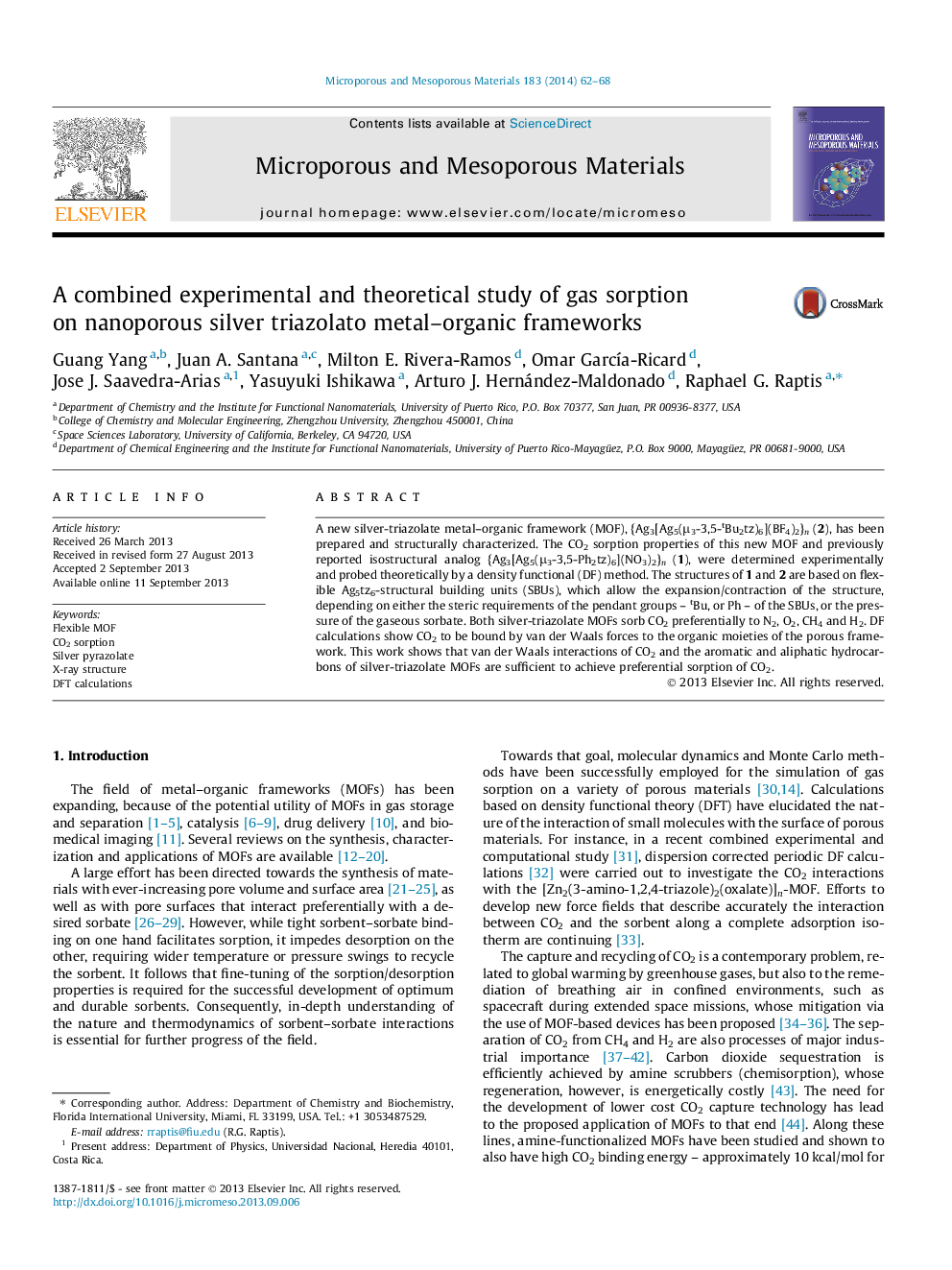| Article ID | Journal | Published Year | Pages | File Type |
|---|---|---|---|---|
| 73210 | Microporous and Mesoporous Materials | 2014 | 7 Pages |
•Two isostructural silver-triazolato cationic MOFs, containing hexagonal channels, are studied.•The MOF lattices expand upon CO2 sorption at 10 atm of pressure.•Reversible sorption/desorption profiles at 1 atm, become hysteretic at 10 atm.•CO2 is selectively sorbed, forming weak van der Waals interactions with the sorbents.•The CO2 sorption sites, proximal to organic moieties, have been identified by DFT calculations.
A new silver-triazolate metal–organic framework (MOF), {Ag3[Ag5(μ3-3,5-tBu2tz)6](BF4)2}n (2), has been prepared and structurally characterized. The CO2 sorption properties of this new MOF and previously reported isostructural analog {Ag3[Ag5(μ3-3,5-Ph2tz)6](NO3)2}n (1), were determined experimentally and probed theoretically by a density functional (DF) method. The structures of 1 and 2 are based on flexible Ag5tz6-structural building units (SBUs), which allow the expansion/contraction of the structure, depending on either the steric requirements of the pendant groups – tBu, or Ph – of the SBUs, or the pressure of the gaseous sorbate. Both silver-triazolate MOFs sorb CO2 preferentially to N2, O2, CH4 and H2. DF calculations show CO2 to be bound by van der Waals forces to the organic moieties of the porous framework. This work shows that van der Waals interactions of CO2 and the aromatic and aliphatic hydrocarbons of silver-triazolate MOFs are sufficient to achieve preferential sorption of CO2.
Graphical abstractA flexible nanoporous silver-triazolato MOF expands as it adsorbs CO2 selectively, forming weak van der Waals interactions between CO2 and aromatic (or alkyl) groups lining the hexagonal channels of sorbent.Figure optionsDownload full-size imageDownload as PowerPoint slide
